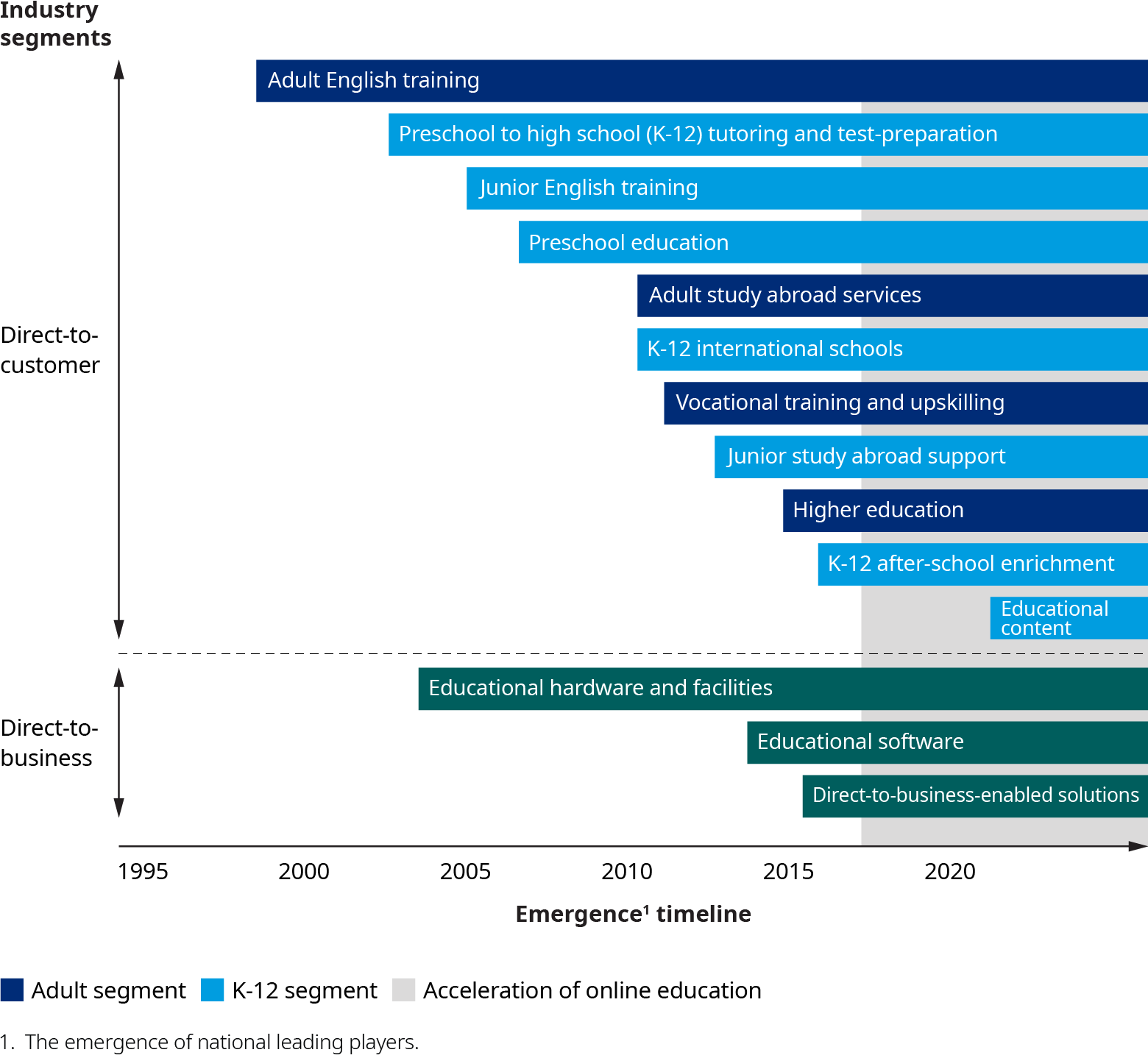Economic growth is deeply intertwined with higher education spending. Following in China’s footsteps, emerging economies in Southeast Asia (SEA) and South Asia (SA) will become new engines of global economic and population growth in the coming decades.
The laws driving the private education sector
China’s private education sector has seen a lot of success in the last 30 years. From China’s trajectory, we can forecast how the private education industry is expected to expand in the emerging SEA and SA markets in the next 10 to 20 years.

The underlying factors driving this growth of Asia’s emerging education markets is that firstly, as these countries’ economic activities become more complex, the types of jobs and skills required increase, and secondly, as household incomes grow, the propensity and ability to pay for education rises significantly, along with the reward of education.
Emerging education markets are better set to succeed
The countries in the SEA and SA regions today have even more favorable market conditions than China. Firstly, they have more open and stable regulatory environments for the private sector. The education markets’ quality and infrastructure are also inferior compared to China, indicating a larger potential for improvement. Thirdly, the industry as a whole is currently backed by a vigorous cycle of technological innovation. Finally, local entrepreneurs with a global vision, and their like-minded peers overseas, are much easier to find now than in the past.
All the effective and innovative education paradigms and business models that have been validated in the past two decades in China can now be quickly iterated and optimized in this corner of the world. Moreover, these positive elements can now be introduced to about a quarter of the world's population, indicating the potential rise of many sizeable education companies in SEA and SA in the coming years.
Observations for SEA education entrepreneurs and investors
However, heterogeneity also plays a key role. SEA’s country-by-country heterogeneity means that the factors for market success vary from one country to the next. Therefore, the idea among entrepreneurs to implement strategies in one country and then duplicating them in another is easier said than done.
Additionally, over the past five years, large-scale investments and mergers and acquisitions in major emerging SEA economies have still been heavily focused on traditional segments. India’s landscape, meanwhile, has been more centered around K-12 tutoring, the counseling and related services for studying abroad, and adult test preparations and vocational training, with strong technology components.
With the emergence of the AI chatbot ChatGPT, new job positions and skill gaps brought about by the upgrading of industrial processes, the continuous upskilling requirements of existing jobs, and proactive government support, we believe the vocational training and upskilling segment will boom across all markets in the coming decades.
For practitioners and investors in education, and EdTech entrepreneurs in particular, the main implication from the evolution of the emerging education market in SEA and SA over the past few years may well be that presently the market’s vast ocean of potential has yet to be tapped.
